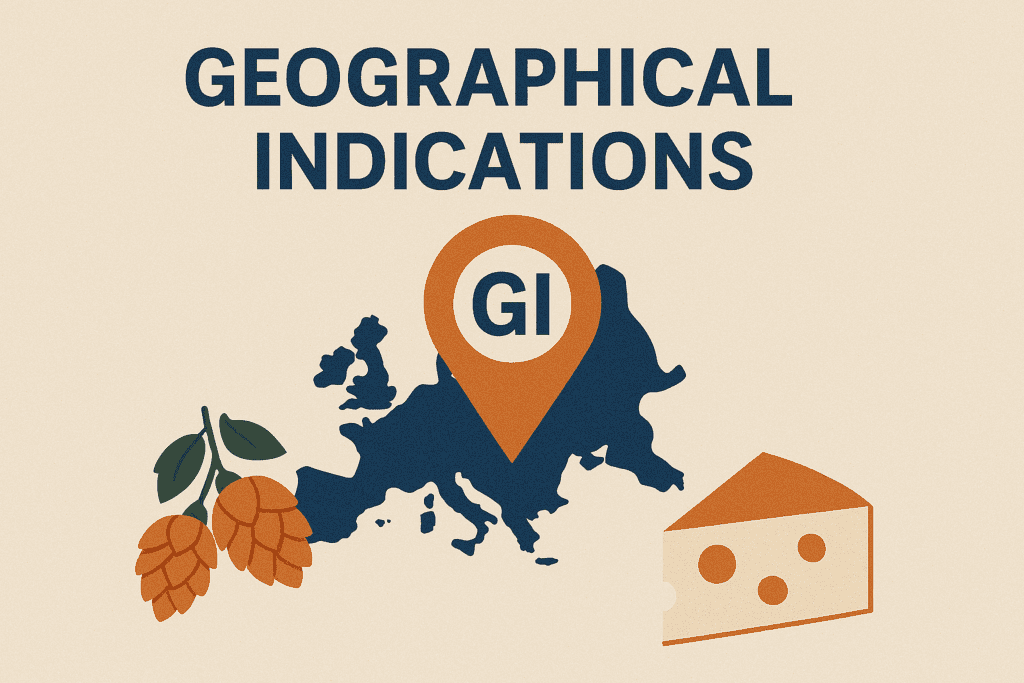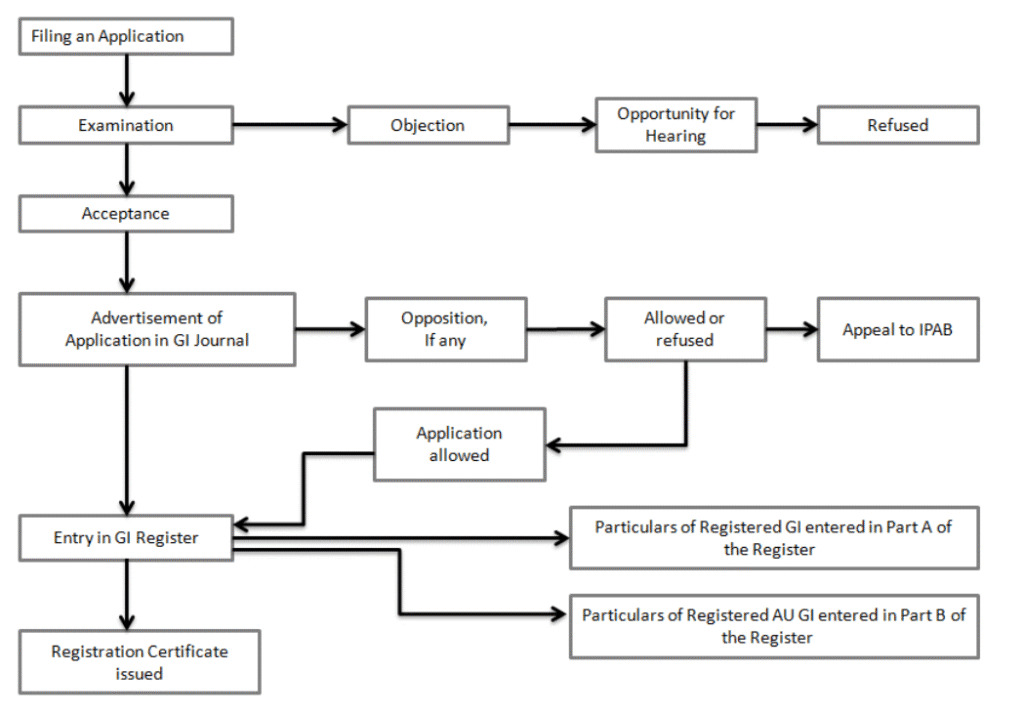How to register Geographical Indications in India is a topic of growing interest, especially as traditional knowledge and regional products gain global significance. In a culturally and geographically diverse country like India, age-old craftsmanship, indigenous agro-produce, and artisanal heritage do more than define identities—they fuel local economies and preserve intangible heritage. This is where Geographical Indications (GIs) become vital both as legal safeguards and economic enablers.

Table of Contents
What is Geographical Indication?
A Geographical Indication is a sign used on products that have a specific geographical origin and possess qualities or a reputation due to that origin. These are especially important for artisans, local communities, and regional economies.
Examples include:
- Darjeeling Tea
- Kanjeevaram Sarees
- Mysore Sandalwood
- Nagpur Orange

Understanding How to Register Geographical Indications in India – A Step-by-Step Guide
Legal Framework for GI in India
The Geographical Indications of Goods (Registration and Protection) Act, 1999, governs GI registration in India. It came into force on 15 September 2003, and India became fully TRIPS-compliant under WTO obligations with this act.
Administering Authority:
- Geographical Indications Registry
- Located in Chennai
- Operates under the Controller General of Patents, Designs, and Trademarks
Benefits of GI Registration
- Legal protection for the registered product
- Prevents unauthorized use or misuse of the product name
- Boosts rural and artisanal economy
- Promotes exports and global recognition
- Encourages sustainable development and cultural preservation
Step-by-Step: How to register Geographical Indications in India

Here’s a detailed 7-step process to register a Geographical Indication in India:
Step 1: Who Can Apply?
Only the following eligible entities can apply:
- Association of persons or producers
- Organization or authority representing the interest of the producers
Individuals cannot file for GI as private proprietors.
Step 2: Preparation of the Application
The application must be made in Form GI-1 (in triplicate) and contain:
- Name and address of the applicant
- Type of goods
- Geographical map of the region
- Proof of origin (historical evidence)
- Method of production
- Uniqueness of product
- Inspection body details
Step 3: Filing the Application
- Application is filed at the GI Registry in Chennai.
- Office : Intellectual Property Office Building, Industrial Estate, G.S.T. Road, Guindy, Chennai – 600032
- Fees: ₹5,000
- Must be accompanied by the statement of case and specimens/photos of the product.
Step 4: Preliminary Scrutiny & Examination
- Registry examines the application for completeness and compliance.
- May raise objections or ask for additional documents.
- Applicant gets a chance to respond within 1 month.
Step 5: Publication in GI Journal
If accepted, the application is published in the Geographical Indications Journal for public review.
- Any person can file an opposition within 3 months (extendable by 1 month).
- If opposed, a quasi-judicial hearing is held.
Step 6: Registration & Issuance of Certificate
If no opposition or successful defence:
- The GI is registered
- Applicant receives a Certificate of Registration
- Details are entered into the GI Register
Step 7: Duration and Renewal
- GI registration is valid for 10 years.
- Can be renewed indefinitely for successive periods of 10 years.
You may visit the Official website of of the Controller General of Patents, Designs & Trade Marks (CGPDTM)
What Is Not Registerable as a GI?
The Act excludes:
- GIs that are likely to deceive or cause confusion
- GIs that are contrary to law or morality
- Generic names or terms
- Names of goods that have become commonplace

Real-Life GI Success Stories in India
1. Darjeeling Tea (West Bengal)
- First GI registered in India (2004)
- Legal protection helped maintain global brand value
- Prevented misuse of “Darjeeling” by non-authentic producers
2. Pochampally Ikat (Telangana)
- Famous for unique weaving patterns
- GI boosted export and employment among weavers
3. Bikaneri Bhujia (Rajasthan)
- GI tag restricted copycats in snack industry
- Contributed to formalising local cottage industry
Challenges in the GI Registration Ecosystem
- Lack of awareness among rural producers
- Complicated legal procedures
- Difficulty in post-registration enforcement
- Inadequate marketing and branding
- GI tag ≠ guaranteed commercial success
Suggestions for Reform
- Simplify the registration process
- Increase government handholding and subsidies
- Build marketing platforms like GI Haats and e-commerce tie-ups
- Enforce stricter penalties for misuse
- GI-related awareness campaigns in local languages
India on the Global GI Map
India has registered more than 400 GIs, ranking among the top nations in GI protection.
Indian GIs have also been recognized globally, such as:
- Kolhapuri Chappals (EU recognition)
- Basmati Rice (global trade dispute and victory)
PYQs for UPSC and Judiciary Exams
UPSC Prelims 2021
Q. With reference to ‘Geographical Indications’ in India, which of the following statements is/are correct?
- They are covered under the Paris Convention for the Protection of Industrial Property.
- They are covered under the TRIPS Agreement.
- Agricultural products are excluded from GI registration in India.
✅ Answer: 1 and 2 only
UPSC Mains (GS-III)
Q. “Geographical Indications can serve as a tool for rural development and inclusive growth.” Explain with suitable examples.
Delhi Judiciary (2021)
Q. Define a Geographical Indication. What are the legal remedies for infringement under the GI Act, 1999?
Rajasthan Judiciary (2019)
Q. Enumerate the steps involved in GI registration and explain the conditions under which a GI may be removed.
Comparison with Other IPs: A Quick Snapshot
| Aspect | GI | Trademark | Patent |
|---|---|---|---|
| Basis of Right | Geographical origin | Brand/business identity | Invention |
| Ownership | Community or group | Individual or company | Individual/company |
| Duration | 10 years (renewable) | 10 years (renewable) | 20 years (non-renewable) |
| Registration Act | GI Act, 1999 | Trademarks Act, 1999 | Patents Act, 1970 |
GI Distribution in India
- Madhubani Paintings (Bihar)
- Nagaland Chak-Hao (Black Rice)
- Araku Coffee (Andhra Pradesh)
- Kangra Tea (Himachal Pradesh)
Geographical Indications are more than legal tools—they are cultural emblems, rural lifelines, and economic boosters. With the right awareness, reforms, and global partnerships, India can transform its GI assets into global brands.
As GI gains attention in both policy debates and competitive exams, it is essential for aspirants and citizens alike to understand its nuances, significance, and procedures.
Stay tuned at Kanoonpedia for more such deep-dive legal explainers that merge real-world importance with academic preparation value.
Read more about Intellectual Property Law Career Opportunities in India
[…] How to Register Geographical Indications in India? Explained […]
[…] Geographical Indications in India – Complete Registration Guide […]